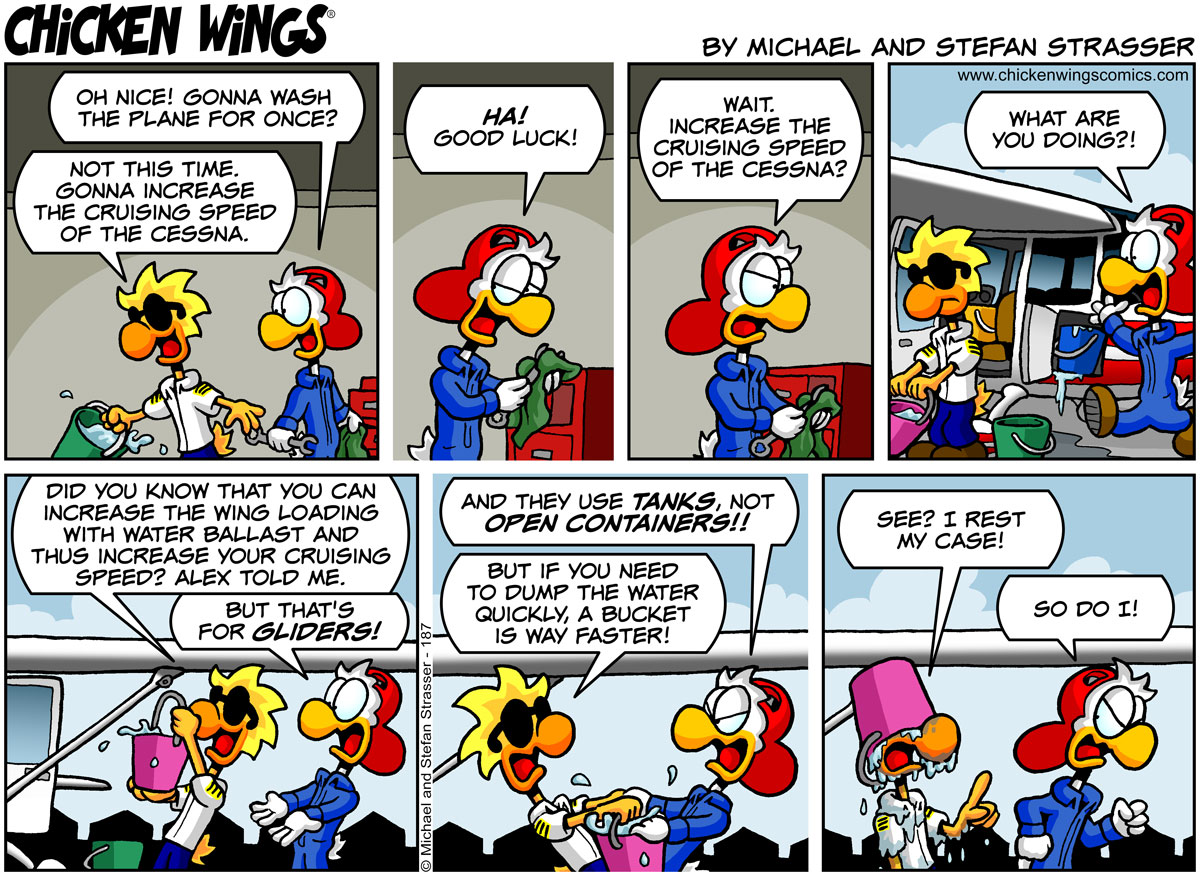Welcome to Sky Soaring › Forums › Restricted content › Water ballast?
- This topic has 3 replies, 4 voices, and was last updated 3 years, 4 months ago by
 Joseph Ricciardi.
Joseph Ricciardi.
-
AuthorPosts
-
-
Wednesday, March 23rd, 2022 at 10:04 am #11847
 John DeRosaParticipant
John DeRosaParticipantCute joke (attached) and interesting that they reference gliders.

I wonder if what the chicken with the yellow hair thinks happens to cruise speed is correct for an airplane (versus a glider). That is, at a certain throttle setting in an AIRPLANE does increasing the wing loading magically also increase the cruise speed?
In a glider increasing the wing loading (and gross weight) with water ballast shifts the performance curve (aka polar) so that the aircraft’s “best” cruise speed (called minimum sink) shifts upward. Meaning you can cruise faster between thermals and that’s important during a contest. But nothing is free as you pay for this gain by needing stronger lift as a lighter ship would need.
So might the airplane get better performance, and thus better fuel economy, with higher wing loading? Heck, I don’t know. But I do know that no Cessna has wing tanks to add water like my glider does!My $0.02.
Best Regards,
John H DeRosa -
Wednesday, March 23rd, 2022 at 10:15 am #11848
 AnonymousInactive
AnonymousInactiveI sent this to Steve separately:Â
Because when the engine goes out on your Cessna, and you set your trim to give the best glide slope, you want to be going faster so you have *less* time to figure out where to land. -
Wednesday, March 23rd, 2022 at 10:38 am #11849
 Joseph RicciardiParticipant
Joseph RicciardiParticipantVariations in aircraft weight do not affect the glide angle provided that the correct airspeed is flown. Since it is the lift over drag (L/D) ratio that determines the gliding range, weight will not affect it. The glide ratio is based only on the relationship of the aerodynamic forces acting on the aircraft. The only effect weight has is to vary the time the aircraft will glide for. The heavier the aircraft is, the higher the airspeed must be to obtain the same glide ratio. If two aircraft have the same L/D ratio but different weights and start a glide from the same altitude, the heavier aircraft gliding at a higher airspeed will arrive at the same touchdown point in a shorter time. Both aircraft will cover the same distance but the lighter one will take a longer time to do so. This is not something that really apples to powered flight, unless you lose an engine and want to get the inevitable over as quickly as possible! Personally, I am more of a delay the agony kind of guy and would rather be slower (lighter) to lessen the impact!😂
Joe Ricciardi
Sent from my iPhone
-
-
AuthorPosts
- The forum ‘Restricted content’ is closed to new topics and replies.
